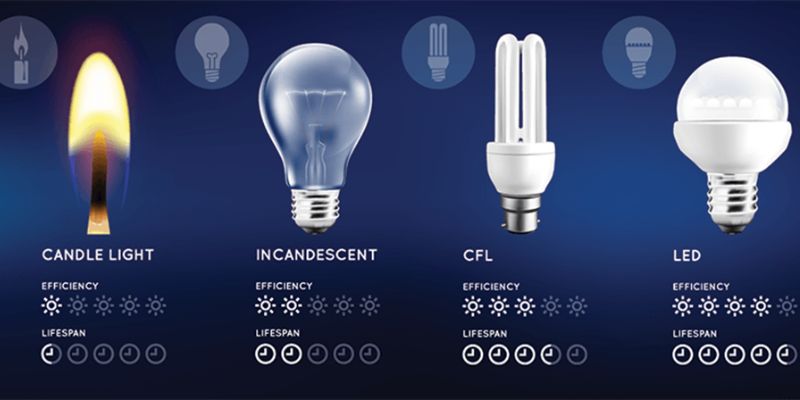
Lighting is an essential part of everyday life, from our homes and offices to streets and industrial facilities. Over the years, the evolution of lighting technology has led to significant improvements in energy efficiency, cost savings, and environmental sustainability. One of the most notable advancements in this field is the introduction of LED bulbs. These energy-efficient light sources have revolutionized the lighting industry, providing consumers with long-lasting, eco-friendly, and cost-effective alternatives to traditional incandescent and compact fluorescent bulbs.
What Are LED Bulbs?
LED (Light Emitting Diode) bulbs are a type of solid-state lighting that use light-emitting diodes to produce light. Unlike traditional bulbs, which rely on heating a filament or using gas to create light, LED bulbs generate light by passing an electrical current through a semiconductor material, which emits photons (light) as a result. This process is far more efficient than conventional lighting methods, which is why LED bulbs have quickly become the preferred choice for many homeowners and businesses.
Energy Efficiency: The Core Advantage of LED Bulbs
One of the primary reasons for the widespread adoption of LED bulbs is their remarkable energy efficiency. LED bulbs consume up to 85% less energy than incandescent bulbs and about 40% less than compact fluorescent lamps (CFLs). This efficiency translates directly into lower electricity bills, which can significantly reduce household and commercial energy costs over time. For example, switching to LED bulbs in a typical household can save hundreds of dollars per year in electricity costs, depending on the number of bulbs used and the length of operation.
Moreover, the energy savings from LED bulbs contribute to reducing the demand on power grids, which in turn decreases the reliance on fossil fuels and reduces greenhouse gas emissions. In an era where environmental sustainability is a priority, LED bulbs play a critical role in lowering carbon footprints and helping to combat climate change.
Longevity: An Investment in Durability
Another major benefit of LED bulbs is their impressive lifespan. On average, an LED bulb can last between 25,000 to 50,000 hours, compared to only 1,000 hours for incandescent bulbs and around 8,000 to 10,000 hours for CFLs. This longevity means that consumers can go years without having to replace their bulbs, further enhancing the cost savings and convenience associated with LED technology.
The extended lifespan of LED bulbs is due to their solid-state construction, which makes them more durable and resistant to damage from vibrations or shock. Unlike incandescent bulbs, which are prone to breaking or burning out, LED bulbs are built to withstand harsh conditions, making them ideal for both indoor and outdoor use.
Versatility and Customization in Lighting
LED bulbs are available in a wide range of colors, brightness levels, and designs, making them suitable for various applications. Whether you’re looking for a soft, warm glow for your living room or bright, focused light for a workspace, there’s an LED bulb to meet your needs. In addition, many LED bulbs are compatible with dimmer switches, allowing for customizable lighting levels that suit different moods and settings.
LED technology also allows for advanced features such as smart lighting. With smart LED bulbs, users can control their lighting through smartphone apps, adjust brightness, change colors, and even set schedules or timers. This versatility has made LED bulbs popular in both residential and commercial settings, where customizable and energy-efficient lighting solutions are in high demand.
Environmental Impact: A Greener Choice
In addition to their energy efficiency, LED bulbs are an environmentally friendly choice for several reasons. First, they contain no harmful substances like mercury, which is commonly found in CFLs. This makes LED bulbs safer to handle and dispose of at the end of their life cycle. Additionally, the long lifespan of LED bulbs reduces the frequency of replacements, resulting in less waste compared to traditional lighting options.
Furthermore, the lower energy consumption of LED bulbs contributes to a reduction in greenhouse gas emissions. As the world moves towards more sustainable energy practices, the widespread use of LED bulbs can significantly contribute to global efforts to reduce carbon emissions and protect the environment.
Cost-Effectiveness: Long-Term Savings
While LED bulbs may have a higher upfront cost compared to incandescent or CFL bulbs, their long-term savings make them a wise investment. The combination of reduced energy consumption, lower maintenance costs, and extended lifespan means that consumers will see a return on their investment within a relatively short period. In fact, many utility companies and governments offer incentives or rebates for switching to LED bulbs, further reducing the initial cost barrier.
Conclusion: The Future of Lighting
The rise of LED bulbs marks a turning point in the world of lighting. With their unparalleled energy efficiency, longevity, versatility, and positive environmental impact, LED bulbs have become the go-to choice for consumers and businesses alike. As technology continues to advance, we can expect even more innovations in LED lighting, making it an integral part of the sustainable future we are striving to build. For anyone looking to save energy, reduce costs, and make a positive environmental impact, switching to LED bulbs is a bright idea.